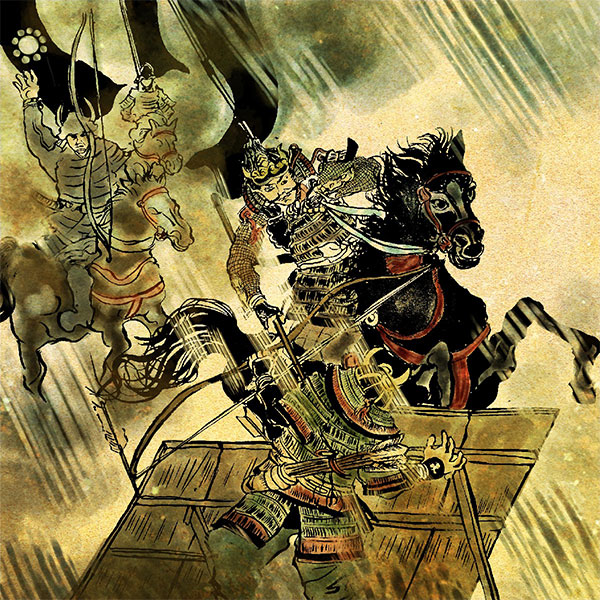- Morioka domainsuffered from famine many times
- Kita-Ou, which includes Morioka, has been ruled by the Nanbu clan since the early Muromachi period, and is a rare area that was ruled by the Nanbu clan without any change of country or transfer even during the Edo period. Morioka was never an area suitable for rice cultivation, and throughout the Edo period, 7

morioka castleMorioka City, Iwate Prefecture
- TOP
- Tohoku
- Iwate Prefecture
- morioka castle
| Other name | Fukata Castle |
|---|---|
| castle construction | 1598 |
| address | 1-1-37 Uchimaru, Morioka, Iwate Prefecture |
Morioka Castle is one of Japan's top 100 castles. Designated as a national historic site.
- Access to Morioka Castle
- Approximately 5 minutes by bus from JR/IGR Iwate Galaxy Railway Morioka Station.
HISTORYMorioka Castle, where only the granite stone walls remain today
Morioka Castle is a flat castle located in Morioka City, Iwate Prefecture. It was the residence of the Nanbu clan, which ruled the entire Kita-Ou area since the Muromachi period, and was also the domain office of the Morioka domain during the Edo period. After the order to abolish Morioka Castle was issued in the Meiji period, most of the buildings including the castle tower were demolished, and now only the granite stone walls remain. Let's unravel the history of Morioka Castle.
- Construction of Morioka Castle
- Construction of Morioka Castle began in 1592. The northern part of Mutsu Province had been under the control of the Nanbu clan since the Nanbokucho era, but in 1582, Toyotomi Hideyoshi, who unified the country, relieved Nobunao Nanbu, the head of the clan at the time, of the territory. . At the time the Nanbu clan was relieved of their territory, they had their headquarters in Kunohe, but they received advice that it was too far north to control the territory, so they decided to build a new castle in the land of the unknown. So, I decided to start building a castle. Morioka Castle is also known as ``Fukigata Castle,'' but there is a theory that Fukigata Castle is the predecessor of Morioka Castle and is a separate castle.
When the Battle of Sekigahara occurred in 1600, the Nambu clan sided with the eastern army, so they continued to be relieved of their territory. Morioka Castle underwent several renovations, and by the Keicho era (1615), it was completed as a castle made entirely of stone walls. During this period, castles in the Tohoku region were mainly built with earthworks, so castles with granite stone walls were extremely rare. Furthermore, Toshinao Nanbu, who was the head of the family at the time Morioka Castle was completed, changed the name of the place from Furakata to ``Morioka,'' with the meaning of ``a thriving and prosperous Oka.'' Furthermore, Eboshi Rock (Treasure Stone), which was found when Nanbu Toshinao leveled the Sannomaru, is still enshrined in the Sannomaru ruins and is worshiped as a treasure of Sakurayama Shrine (formerly Awajimaru Daimyojin). Additionally, in conjunction with the construction of Morioka Castle, the wetlands north of the Nakatsugawa River were reclaimed to create a castle town.
Furthermore, the bronze ``imitation jewel'' that was moved from the former castle grounds when the castle was built is still attached to ``Uenohashi'', one of the three bridges of Morioka, and is still designated as an important cultural property of the country. . - Morioka Castle in the Edo period
- Morioka Castle was officially completed in 1633. However, the main keep was lost due to a fire the following year, and Fukuoka Castle (Kunohe Castle) became the residence of the Nambu clan for a time, but restoration was completed in 1635, and Morioka Castle was once again the residence of the Nambu clan. From then on, it functioned as the domain office of the Morioka domain until the Meiji Restoration.
- Morioka Castle after the Meiji era
- In 1871, Morioka Castle was abolished due to the Castle Abolition Order. The castle buildings were originally planned to be preserved, but due to their extreme deterioration, almost all of them were demolished, and the site of the castle ruins, with the exception of the land sold to the army, became the property of the former feudal lord, the Nanbu family. In 1906, the site of the castle ruins was leased to Iwate Prefecture by the Nanbu family and opened to the public as ``Iwate Park.'' In 1934, the land leased to Morioka City was purchased from the Nanbu family, and in 1937 it was designated as a national historic site. In 1989, it was selected as one of Japan's top 100 city parks, and in 2006, it was also selected as one of Japan's top 100 parks. At this time, the park was nicknamed ``Morioka Castle Ruins Park,'' but even today, ``Iwate Park'' is better known, and both names are still used.
In addition to the stone walls of Morioka Castle, the current Iwate Park includes a variety of facilities, including a bell outside the Hikage Gate, a cherry blossom grove, a plum grove, and a multipurpose plaza. As well as being a place of relaxation for Morioka citizens, various events are held there, and it is also one of Morioka City's tourist attractions. The existing stone walls can be seen stacked in multiple ways: open, piled, and piled with cloth, and restoration work is currently underway.
Read about incidents related to Morioka Castle
- Kunohe Masazane RebellionHideyoshi's final battle to unify the country
- In March 1591, Toyotomi Hideyoshi had almost achieved unification, and the final enemy who stood in his way was Masazane Kunohe, a member of the Nanbu clan. He started a rebellion against the Nanbu family head and his supporter Hideyoshi, and Hideyoshi led the charge.

History of the Morioka Domain, whose domain office is Morioka Castle
| Domain office | morioka castle |
|---|---|
| old area | Northern Mutsu Province |
| stone height | 200,000 koku |
| Fudai/Tozama | Foreigner |
| main lord | Mr. Nanbu |
| Estimated population | 120,000 people (first year of Meiji) |
Nanbu Nobunao's eldest son, Toshinao, established the domain. It once ruled Tsugaru, but lost its territory due to the defection of Tsugaru Tamenobu (Oura Tamenobu). After that, the feud continued until the end of the Edo period.






















